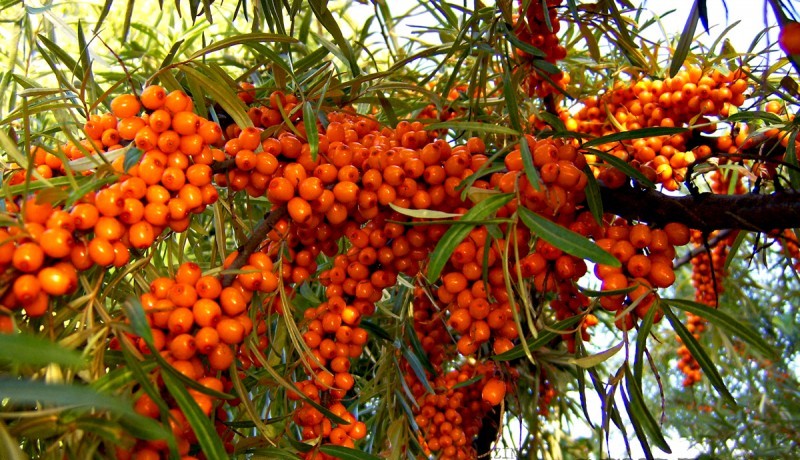About the sea-blackthorn
Hippophae’s healing
properties have been long known to man. Nowadays, these properties are
reemerging in the eye of the medicine and natural sciences. The buckthorn is
the rare herbal species that comprise almost the entire scope of the essential
vitamins to the human health, apart from a variety of other revitalizing
organic components.
The berries of the sea-buckthorn are of a round or oblong form and
distinguished shade of yellow, bordering on orange. The berry possesses strong
sour taste and unique fresh scent. The bush-like plant blossoms at the end of
April and/or beginning of May. Berries are ready for harvesting at the end of
August and/or beginning of September and hand-gathered.
The buckthorn’s applications for curing cases of various
diseases have been discovered long before the emergence of modern medicine. The
first known pharmacopoeias on the
medicinal applications of Hippophae are dated back to 618-907 AC. As a cultivated plant,
however, it is known only since 19th century. With the scientific
discoveries on the buckthorn’s vitamins and biologically active compounds in 20th
century came the reemergence of the use of berries for prophylactic purposes
and general revitalization of the human organism. Thereby, the reemergence of
the little yellow fruit brought it popularity among other natural sources of
bodily supplements. Discoveries show that the sea-buckthorn berries comprise
practically every vitamin found in nature apart from such organic compounds as
amino-acids, fatty-acids, sterines, flavonoids, tannins, organic acids, trace
minerals, etc. Each berry contains approximately 150- 190 biologically active
compounds.
Healing and prophylactic properties
The berries of Hippophae can be taken as foodstuffs in different forms: fresh, canned, frozen, or dried.
All the useful biological compounds are present in the fruit in a highly
concentrated amount, i.e. both the entire collection of fat- and water-soluble
vitamins coexist in the berry along with minerals.
Action: anti-inflammatory, antimicrobial, constrictive,
radio-protective, and pain-relieving. The berries also normalize the levels of
cholesterol, heal ulcers and wounds, propel urine, and act as an antioxidant,
simultaneously being a reliable vitamin source. The berries reduce the blood
coagulation rate, thus preventing the development of thrombophlebitis and infarct,
stimulate the cardiac function, rid the body of cholesterol by binding it, prevent
the development of atherosclerosis, contributes to hematology (the blood-regeneration
function) and immunity.

